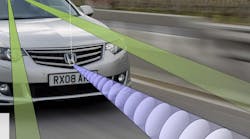This file type includes high resolution graphics and schematics when applicable.
This scenario may seem like science fiction, but you may not realize how fast it’s approaching. Already, automated and autonomous vehicles are being designed, built, and tested all around the world. They’re fitted with an array of intelligent features based on sensors, LIDAR, GPS, Wi-Fi, and other technologies. Such smart cars and smart roadways will connect to each other and their drivers, revolutionizing the way we travel and move goods in cities, suburbs, and the countryside.
Connected, intelligent vehicles are being brought to you by standards. Technical standards make them work, and safety standards keep them safe. These standards come from, and are being developed by, standards-developing organizations and policy makers around the globe. Some of the decades-old standards are now being used for advanced communications and connectivity. Others under construction will meet the needs of future transportation.
We are entering an age of globalization, and living in an age where technology is more and more integral to the ways that humanity lives, works, and plays. So it follows that global technical and safety standards are increasingly becoming the underpinnings of social well-being in almost every aspect of life. The global outlook for transportation combines IT, communications, electric, and electronic technologies for connected vehicles, automated vehicles, and transportation electrification. These emerging areas require the kind of globally open development and coordination defined by the “OpenStand” modern paradigm for standardization.
The OpenStand paradigm maintains five principles: cooperation among standards organizations; adherence to due process, broad consensus, transparency, balance, and openness in standards development; commitment to technical merit, interoperability, competition, innovation, and benefit to humanity; availability of standards to all; and voluntary adoption. Standards produced under these principles are driven by global markets and steered by technical requirements. They fuel technology innovation, market expansion, and job growth. They enable more useful, interoperable, and lower-priced products and services. They help humanity get healthier, be more productive, and stay safer.
Within the field of intelligent transportation, several standards-setting organizations are hard at work. In particular, the IEEE is active many key areas, especially in the fields of connected vehicles, autonomous and automated vehicles, inter- and intra-vehicle communications, and other types of transportation electrification. These technologies include, but are not limited to, mobile applications, sensor networks, and communications that allow human-to-vehicle, vehicle-to-vehicle, vehicle-to-infrastructure, vehicle-to-platform, and vehicle-to-everything exchange of information and data.
IEEE standards follow the OpenStand paradigm of contemporary standardization, and they’re helping accelerate the new age of automated and autonomous travel. Recently, a Standards Coordinating Committee for Transportation (SCC42) was created within the IEEE to leverage globally recognized IEEE standards and best practices. SCC42 represents over 30 IEEE technical societies, bringing together related disciplines and leading the global effort to promote transportation standards and facilitate adoption throughout the entire transportation ecosystem. It will develop guides, recommended practices, standards, and common definitions of terms demanded by future transportation.
IEEE standards and standards-development projects that relate to transportation electrification and connected vehicles can be found in a variety of areas. Here are but a few:
The smart grid will allow utilities to integrate electric vehicles. IEEE standard 2030 is the “Guide for Smart Grid Interoperability of Information Technology Operation with Energy Technology and the Electric Power System and End-Use Applications and Loads.” This standard provides guidelines in understanding and defining smart-grid interoperability of the electric power system with end-use applications and loads, such as electric vehicles.
Power-line communications are part of intelligent transportation; they allow data to be transmitted over existing power lines. IEEE standard 1901 is the “Standard for Broadband over Power Line Networks: Medium Access Control and Physical Layer Specifications.” It’s for high-speed communication devices that use electric power lines, also known as broadband over power-line devices, which can be used in transportation platform applications. The standard also addresses security to ensure that the communications between users are private.
Networking and communications are obviously crucial to connected vehicles. The well-known IEEE 802 series, which includes the IEEE 802.3 Ethernet and IEEE 802.11 Wi-Fi standards, is an obvious choice for vehicle connectivity. These proven and broadly adopted standards are being used in ways that may very well go beyond the wildest imaginations of their inventors.
Wireless access in vehicular environments is another key to intelligent transportation. The IEEE 1609 series of standards, known as the WAVE standards, addresses the lack of homogeneous communications interfaces between different automotive manufacturers. It also helps solve the lack of ubiquitous high-speed communications between vehicles and service providers.
This file type includes high resolution graphics and schematics when applicable.
In fact, in 2014, the U.S. Department of Transportation National Highway Traffic Safety Administration (NHTSA) recognized the IEEE’s work on the IEEE 1609 standards, which were specifically developed to address dedicated short-range communications, called “DSRC” systems, and vehicle-to-vehicle applications. The standards have been successfully field-tested over the last several years, and, in February, the IEEE 1609 series helped form an announcement by the U.S. Department of Transportation that vehicle-to-vehicle communications safety technology was ready for deployment.
With standards for intelligent transportation traveling down the road to reality, we are approaching the destination of smart, connected vehicles. Buckle up! Reaching the future of transportation should be an exhilarating ride.


